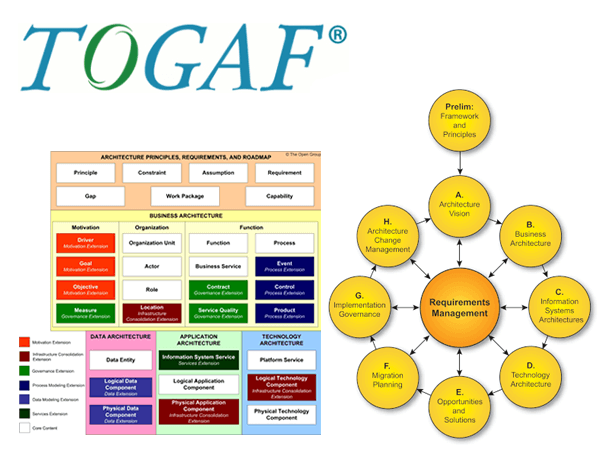An Architecture Roadmap is a pivotal deliverable within the TOGAF framework, outlining a series of incremental work packages designed to transition an organization from its current Baseline Architecture to a desired Target Architecture. This roadmap not only delineates the steps necessary for this transformation but also highlights the business value associated with each work package, enabling stakeholders to comprehend the benefits at various stages of the implementation.
Development Phases of the Architecture Roadmap:
An Architecture Roadmap is an iterative process that spans 7 phases of the TOGAF Architecture Development Method (ADM):
-
Preliminary Phase: Establishes the architecture framework and principles guiding the roadmap’s development.
-
Phase A – Architecture Vision: Defines the high-level vision and scope, setting the foundation for the roadmap.
-
Phase B – Business Architecture: Details the business strategy, governance, organization, and key business processes.
-
Phase C – Information Systems Architectures: Focuses on both Data and Application Architectures, outlining how data and applications support the business.
-
Phase D – Technology Architecture: Describes the logical software and hardware capabilities required to support the deployment of business, data, and application services.
-
Phase E – Opportunities and Solutions: Identifies the major implementation projects and groups them into work packages.
-
Phase F – Migration Planning: Prioritizes the projects, develops a detailed implementation and migration plan, and finalizes the Architecture Roadmap.
Typical Contents of an Architecture Roadmap:
While TOGAF provides flexibility to cater to various organizational needs, a comprehensive Architecture Roadmap typically includes:
-
Work Package Portfolio:
- Name, description, objectives, and deliverables of each work package.
- Functional requirements and dependencies.
- Relationships to opportunities, the Architecture Definition Document, and the Architecture Requirements Specification.
- Business value assessment.
-
Implementation Factor Assessment and Deduction Matrix:
- Risks, issues, assumptions, dependencies, and required actions.
-
Consolidated Gaps, Solutions, and Dependencies Matrix:
- Identified gaps across architecture domains.
- Potential solutions and their interdependencies.
-
Transition Architectures:
- Intermediate states that guide the progression from the Baseline to the Target Architecture.
-
Implementation Recommendations:
- Criteria for measuring project effectiveness.
- Identified risks and issues.
- Solution Building Blocks (SBBs) to be utilized.
Enhancements in TOGAF 10th Edition:
The TOGAF Standard, 10th Edition, introduces a modular structure, dividing content into the TOGAF Fundamental Content and the TOGAF Series Guides. This design aims to make the adoption of best practices more accessible and adaptable to various organizational contexts. The 10th Edition offers expanded guidance and how-to material, enabling organizations to operate efficiently across a broad range of use cases, including agile enterprises and digital transformation.
In summary, the Architecture Roadmap serves as a strategic tool within the TOGAF framework, guiding organizations through a structured transformation journey. The 10th Edition’s enhancements provide more detailed guidance, making it easier for organizations to tailor the roadmap to their specific needs and contexts.

